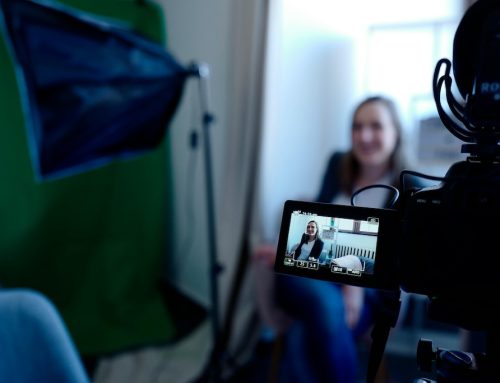Picture this: someone searches a question that directly relates to your business—something you answer perfectly on your website. But before they can even scroll, Google serves the answer right there in bold. No click. No visit. No trace of interest on your analytics dashboard.
Welcome to the era of zero-click searches—where the rules of visibility have changed, and the top of the search engine results page (SERP) is less a leaderboard and more a battleground. Instead of vying for position alone, brands are now competing for presence—ownership of space within Google’s increasingly self-contained search ecosystem.
Thanks to innovations like AI Overviews and a growing array of SERP features, Google is answering more user queries before readers ever leave the search page. And while that’s a win for user convenience, it leaves many business owners asking the inevitable: If users don’t click, how can we still be seen?
Let’s unpack what zero-click really means—and more importantly, how your brand can thrive within it.
What Is a Zero-Click Search?
Put simply, a zero-click search is a search that ends on the search results page itself. No website visit. No further action. The user asks, and Google answers—right there.
These direct answer queries are increasingly resolved by rich features like:
- Featured snippets (those boxed blurbs at the top)
- Knowledge panels (especially for branded and informational queries)
- AI Overviews (Google’s latest conversational summary layer)
- Local packs (maps, business hours, and reviews for local businesses)
- Direct answer boxes (math, weather, time zones—you name it)
- People Also Ask sections (an endless loop of curiosity)
Still unsure? Try asking Google, “What is the capital of France?” You’ll see the answer—Paris—served instantly, front and center. That’s zero-click in action.
And this isn’t some fringe trend. The numbers vary depending on the study, but the consensus is that more and more Google searches now end without a single click. The numbers skew even higher on mobile searches and voice search, where speed trumps exploration.
Why Zero-Click Searches Matter in 2025
If your business depends on organic traffic, this shift might feel like the rug’s being pulled out. After all, what’s the point of ranking if no one’s clicking?
But here’s the nuance: while zero-click searches may suppress traffic, they amplify visibility—if you know how to harness them. Being featured in a snippet, shown in the local pack, or referenced in an AI Overview puts your brand at the center of the conversation. You’re no longer just an option on a list. You’re the answer.
Google’s goal has always been to resolve queries as fast as possible. Now, it’s doing it with layered intelligence: drawing from structured data, crawling deep content, and summarizing complex information into concise answers. That means you’re not just optimizing for rank anymore—you’re optimizing for representation. And in this new game, smart search engine optimization (SEO) is less about luring clicks and more about building authority in context.
How to Optimize for Zero-Click Searches
The old organic search SEO playbook— keywords and backlinks—isn’t going to cut it here. Zero-click optimization demands a different mindset: curate to be cited, not just visited.
1. Target Featured Snippets Thoughtfully
Think of featured snippets as Google’s way of spotlighting your content without sending traffic. Harsh, maybe—but if you’re the one being quoted, it’s a strong signal of authority.
To earn these, focus on structured content:
- Use clear subheadings (H2s, H3s) that match natural-language questions
- Include definitions, step-by-step instructions, or lists that align with query intent
- Lead with the answer, then elaborate—Google loves brevity at the top
Fun fact: you don’t have to be the #1 result to be the featured snippet. Often, Google pulls from lower-ranking pages that better match user phrasing.
2. Implement Schema Markup Where It Matters
Schema markup is the language behind the spotlight. It tells Google what your content means, not just what it says. Done well, it boosts your chances of showing up in:
- Rich snippets (think reviews, recipes, FAQs)
- Knowledge panels for brands and people
- Local listings in the local pack
- People Also Ask entries and AI-generated summaries
If the term “structured data” makes your eyes glaze over, no worries—this is a core part of our technical SEO service. You don’t need to code it; you just need to benefit from it.
3. Create FAQ Sections—But Make Them Worth Reading
FAQs aren’t just filler—they’re fuel for zero-click visibility. Think beyond generic questions and focus on the specific things your customers actually ask. Use conversational phrasing, and don’t shy away from long-tail nuance. These sections often get pulled into AI Overviews and People Also Ask with minimal effort.
Pro tip: Google favors clarity, not fluff. Be direct in your answers—but leave room for curiosity.
4. Go Long (Tail) and Go Local
Broad keywords are crowded. But long-tail keywords—those specific, intent-rich queries—are perfect for zero-click optimization. They also help you align with voice search, which tends to mirror how people speak, not how they type.
If you’re a local business, double down on local SEO. Ensure your Google Business Profile is complete and consistent, use location-based schema, and encourage reviews. You may not get a click, but showing up in the local pack (map + contact info) puts you top of mind when purchase intent kicks in.
Beyond the Click: Rethinking Value
Here’s the shift: in 2025, clicks aren’t the only currency. Visibility itself—strategic presence in the right SERP features—drives trust, familiarity, and eventual conversion.
You may not see the user come through your site immediately, but if they see your brand in a featured snippet today and search for your product tomorrow, that’s not a loss—it’s a delayed win. Think of it as brand recall in search form.
In this landscape, visibility creates momentum. Direct traffic increases, referral visits rise, and you build a foundation that can be nurtured across platforms—whether that’s search, social media, or email.
So… Is SEO Dead?
Not even close. But it’s different.
SEO efforts in a zero-click world isn’t about fighting the algorithm—it’s about understanding what it’s trying to do. Google wants to surface the most helpful, authoritative content—so that’s your north star.
Smart businesses are shifting from “how do I rank?” to “how do I serve the intent better than anyone else?” That means optimizing for mobile and voice, embracing AI search features, and building trust in every search interaction—whether the user clicks or not.
At BlueHat, we’ve lived through every evolution. We’re not guessing what works. We’ve tested it, tracked it, and helped businesses ride wave after wave of change without losing their edge.
Why Partner with BlueHat? Your Strategic Advantage in the Zero-Click Era
Let’s be honest: today’s search landscape isn’t getting simpler. It’s faster, noisier, and more fragmented. Winning isn’t about outspending or outposting. It’s about outsmarting your competition.
At BlueHat Marketing, we bring together two decades of search experience, a full in-house team of SEO strategists, content creators, developers, and digital marketers—and a singular goal: to build visibility that sticks. From technical SEO and structured data to content design, local SEO, and AI-ready optimization, every strategy we deploy is custom-built, data-backed, and ruthlessly focused on ROI.
And unlike agencies that vanish behind dashboards, we stay close. Transparent reporting, strategic clarity, and real-world results are what keep our clients coming back—and ranking. Whether you’re just getting started or looking to stay ahead of the next algorithm twist, we’re ready to build a digital strategy that actually reflects your goals.
So if you’re serious about getting found—even when clicks don’t come easy—connect with BlueHat. Let’s craft a visibility and search strategy that isn’t just reactive, but resilient. Because in a world where users find answers faster than ever, your brand should be the one providing them.





